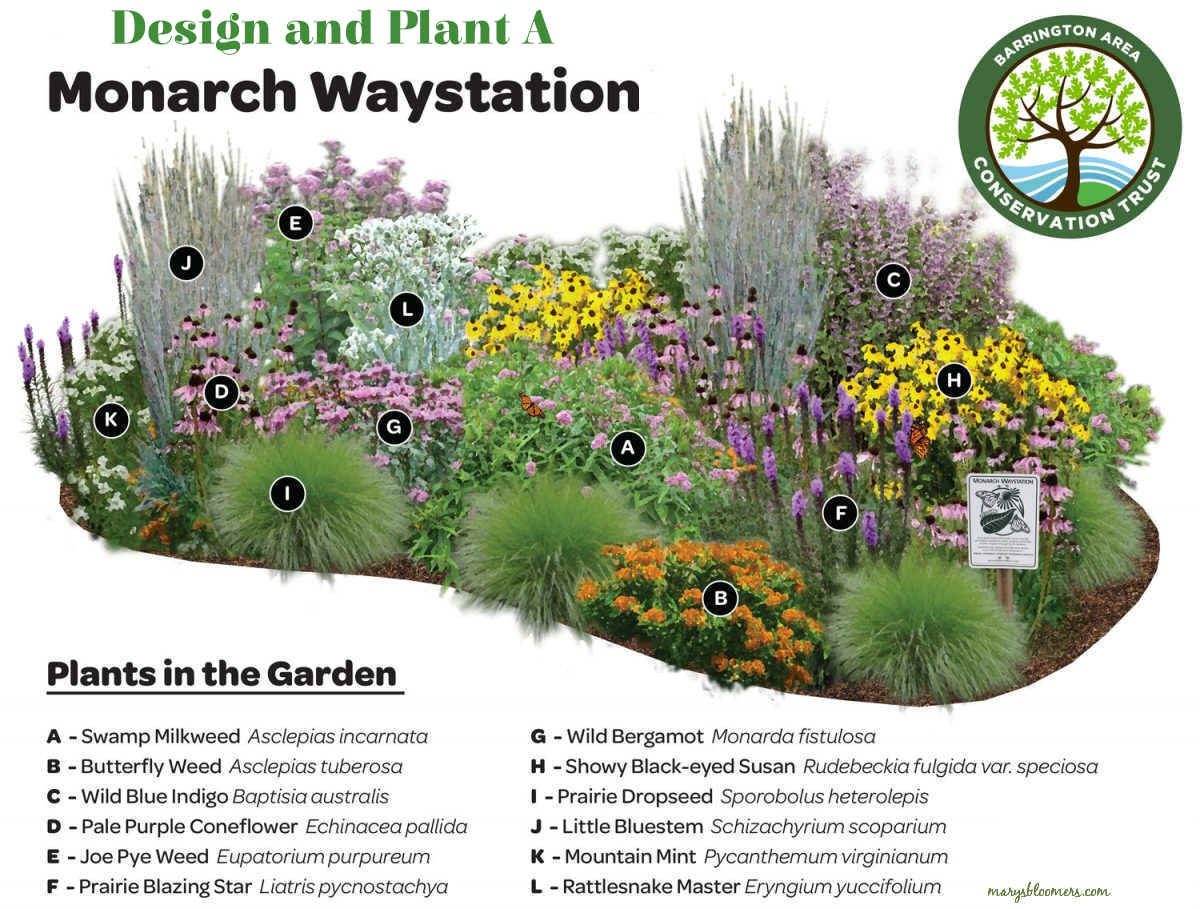|
|
||||
|
Attracting and Feeding Adults and Larvae Butterfly garden host plants are where the butterflies prefer to lay their eggs. They are chosen because of
what the larvae, or caterpillars, eat after hatching. Flowers - Plant butterfly milkweed, arabis, sweet rocket, black-eyed susan, purple coneflower, honesty, hollyhocks, sweet william, white and purple alyssum, cosmos, coreopsis, phlox, daisies, catnip, heliotrope, sea holly, asters, stocks, zinnias, yarrow, globe thistles, lavender, rosemary, thyme, stonecrops, sweet woodruff, candytuft, verbena and gaillardia.
Shrubs/Trees - Butterfly bush, common lilac, mock orange, beauty bush, blackberry, potentilla, honeysuckle, hawthorn, weigela, sumac, rose of Sharon, spirea, privet and pussy willow. The Butterfly Bush is very hardy in both my zone
6 and zone 8 gardens,
evergreen in zone 8, dies to the ground in zone 6 Butterfly bushes have long, arching stems. Mine are about 6 ft. long. There's one big flower on the ends of the stems. I have seen two or three butterflies feeding on one big bloom. |
||||
|
|
||||
 |
||||
|
||||
|
|
||||
|
Feeding
And Caring For Your Butterflies
My Milkweed in the Pollinator Garden
|
Let's not forget the value of the Butterfly Bush (buddleia)
|

|
|
|
This site uses Watermarkly Software |













